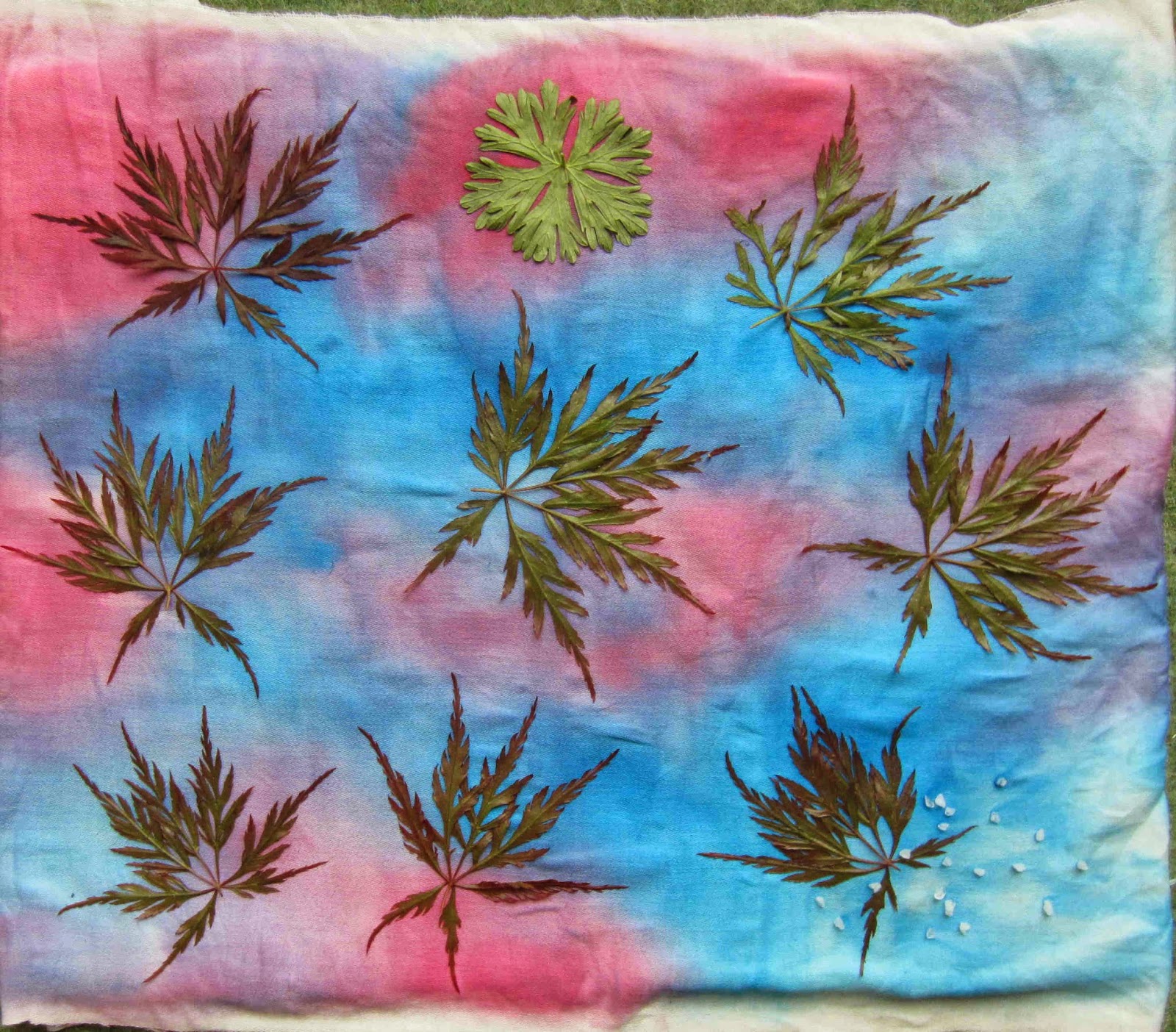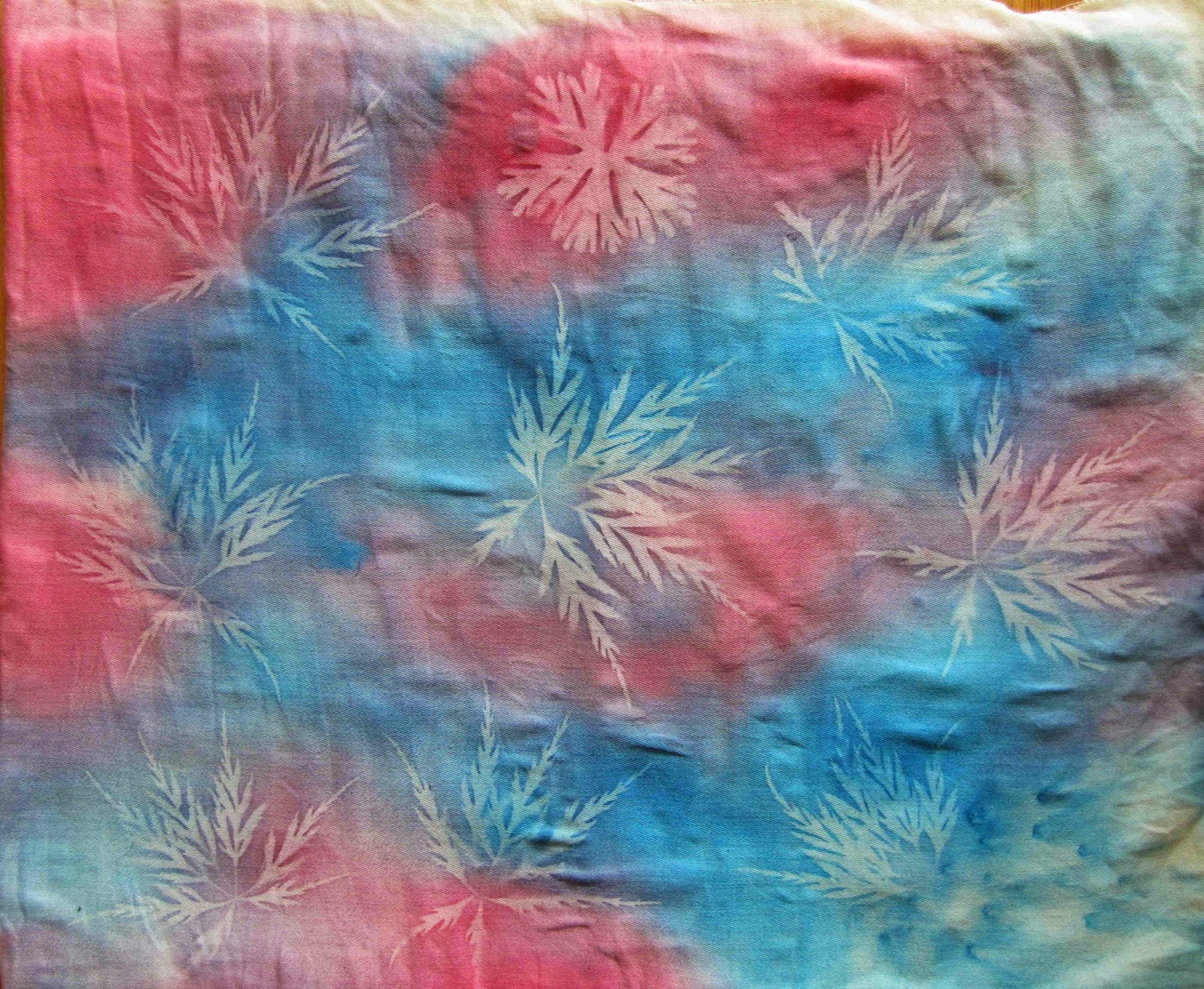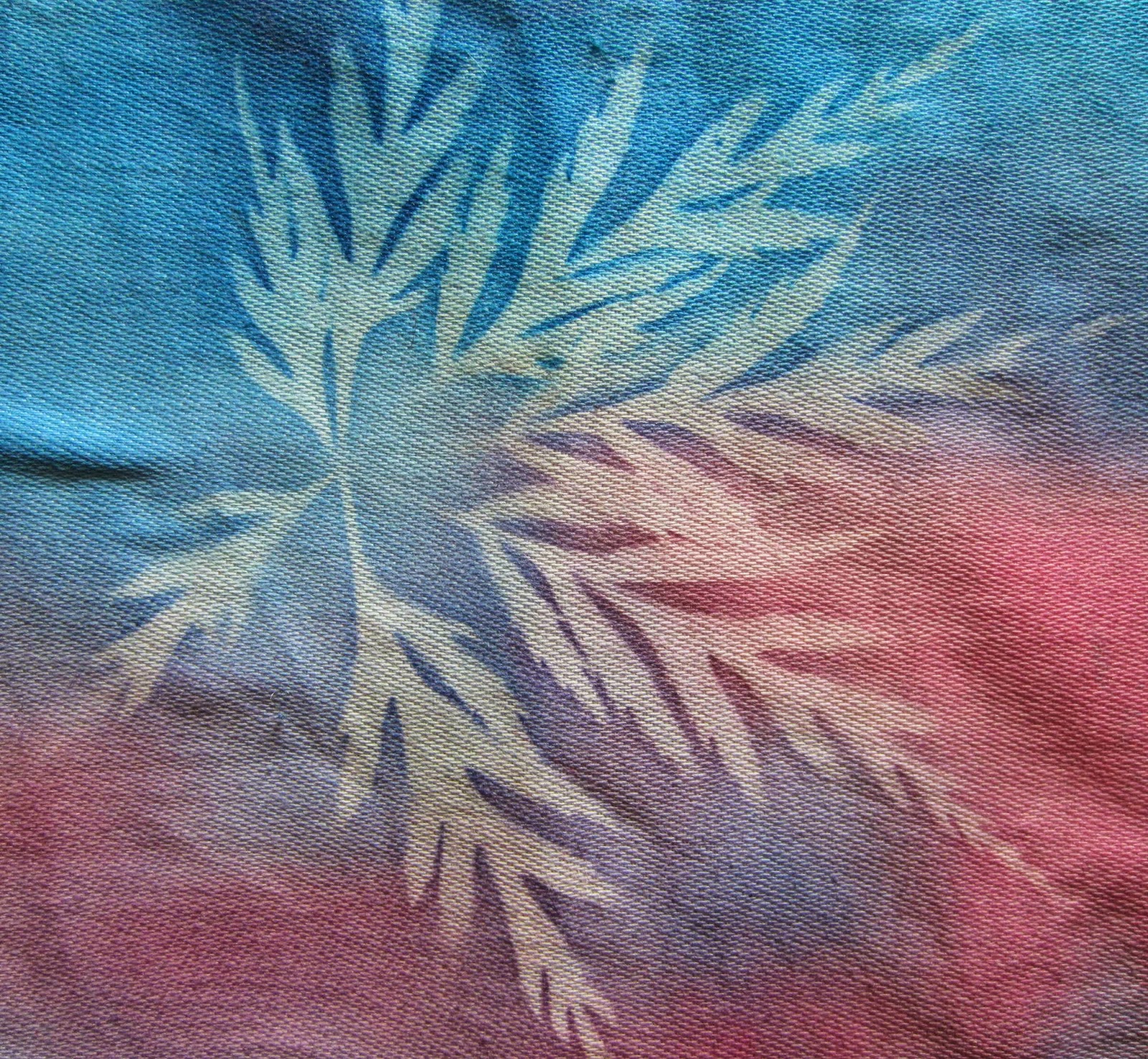I was reading a blog a couple of weeks ago with some scepticism. With the benefit of hindsight I concede my scepticism was a little unfair. The blogger in question had posted about sun dyeing and said that you don’t need to buy those expensive photo-sensitive fabric dyes / paints, any old fabric paint will do. My initial reaction was, if any old fabric paint will do why is there a market for those expensive photo-sensitive paints? Too good to be true right?
The scientist in me made me set my scepticism to one side long enough to perform a little experiment. We all want to save our pennies to spend on more textile toys don’t we??
Materials:
- Light coloured cotton based fabric (I expect silk will work too but synthetics possibly not – those are experiments for another day 🙂 )
- A pad of newspaper or a large box (I used a plastic under-bed storage box)
- Masking tape
- A spray bottle filled with water
- Fabric paints (I used Setasilk (iron-fix) silk paint and acrylic paint mixed 50:50 with textile medium). If you don’t plan to wash your fabric you can replace the textile medium with water.
- Large brushes (I used the foam type)
- Resists – I used leaves but anything that will lie flat on the fabric and block the light all work well. Paper cut outs and opaque stencils work well.
This is what I did:
- Stretch your fabric over a box or a pad of newspaper with masking tape
- Spray with water until evenly wet, allow the water to disperse while you gather some leaves or other objects to create a resist.
- Working quickly, cover your fabric with fabric paint and lay out your resists, ensure they are as flat as possible to the surface of the fabric.
- Leave in a sunny spot for 2 hours (beware of breezes blowing all your resists away if you put your box outside – I left mine in front of a south facing window).
- The hardest part is resisting the urge to lift the leaves to see what is happening underneath 😉
- Remove the leaves / resists and iron for several minutes to heat fix.
Sitting in the sun catching some rays, the pink and blue on the left is the Setasilk paint and on the right is red acrylic paint mixed with textile medium.
I think I applied the acrylic paint (on the right) too thickly, hence the effect is not so noticeable. In the areas where the paint is a little thinner the leaves are paler.
After 2 hours on a sunny windowsill:
Close up of the salt effect, it appears to have concentrated the paint under the grain and drawn the paint from the surrounding area:
A close up of an acer leaf outline.







I have done the sun printing with Dye-na-Flow paints. They work well. You can even use the plastic stencil method without the sun. Just place the stencil down after you paint and let it dry. The pattern shows up magically 🙂 For keeping your leaves in place, it works great if you have a piece of glass to cover the leaves and hold them in place to prevent them blowing away.
I have done the sun printing with Dye-na-Flow paints. They work well. You can even use the plastic stencil method without the sun. Just place the stencil down after you paint and let it dry. The pattern shows up magically 🙂 For keeping your leaves in place, it works great if you have a piece of glass to cover the leaves and hold them in place to prevent them blowing away.
I've done this using Pebeo Setacolor paints for fabric. It's too hot here in NC to do this in the summer, it's more of a winter thing, because the sun is way too hot and dries out the fabric too quickly during the late spring to late fall. Yours turned out great!
I've done this using Pebeo Setacolor paints for fabric. It's too hot here in NC to do this in the summer, it's more of a winter thing, because the sun is way too hot and dries out the fabric too quickly during the late spring to late fall. Yours turned out great!
Thanks Ruth, I'll have to try the stencils in the dark too! I assume the colour difference is down to how quickly the paint is drying rather than something like UV from the sun?
Thanks Ruth, I'll have to try the stencils in the dark too! I assume the colour difference is down to how quickly the paint is drying rather than something like UV from the sun?
Thanks Laura. That's a good tip about not trying to do this in the height of summer (not that it ever gets that hot in the UK!)
Thanks Laura. That's a good tip about not trying to do this in the height of summer (not that it ever gets that hot in the UK!)
Very interesting Teri! Results are beautiful! I've never heard about sun dyeing!
Very interesting Teri! Results are beautiful! I've never heard about sun dyeing!
Thank you Felicity. It really is very simple and quick to do, worth a play 🙂
Thank you Felicity. It really is very simple and quick to do, worth a play 🙂
Sun dyeing is my favorite activity…unfortunately we haven't had any good sun yet this year! I have used both cotton and silk, mostly using setacolor paints.
Your prints worked great!
Sun dyeing is my favorite activity…unfortunately we haven't had any good sun yet this year! I have used both cotton and silk, mostly using setacolor paints.
Your prints worked great!
I haven't wanted to buy ANOTHER set of paints, so have not tried this, but I WANT to. Everyone said you needed a certain type.Thanks for experimenting, now maybe I'll do some experimenting of my own, with the different acrylic paints I have.
I haven't wanted to buy ANOTHER set of paints, so have not tried this, but I WANT to. Everyone said you needed a certain type.Thanks for experimenting, now maybe I'll do some experimenting of my own, with the different acrylic paints I have.
Thank you Marsha – your double dyeing method produced some really beautiful results. This is the link for anyone who would like to see more… http://marshaleith.wordpress.com/?s=sun
Thank you Marsha – your double dyeing method produced some really beautiful results. This is the link for anyone who would like to see more… http://marshaleith.wordpress.com/?s=sun
I was of the same opinion, loved the effects I've seen other people achieved but baulked at the price of the photosensitive dyes. Enjoy!
I was of the same opinion, loved the effects I've seen other people achieved but baulked at the price of the photosensitive dyes. Enjoy!